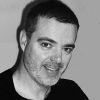What are the benefits of squats?
The wide-ranging benefits of squats will get you motivated for your next workout


Discovering the benefits of squats can make your mid-workout struggle seem all the more worth it, trust us. Of course, it’s well known that squats can help to tone your lower body, but the impact that this compound exercise can have on your strength and even your testosterone levels will leave you feeling even more accomplished once you hit your next squat challenge number.
Once you’ve picked up everything you need to know about the benefits of squats, you can add a challenge with the best adjustable dumbbells which will intensify your workouts. You can even try our squats challenge for a new way to test yourself.
But first, this essential breakdown of all of the benefits of squats is an in-depth look at this particularly popular move. By analyzing the exercise in detail and giving consideration to all of the variations too, we can assure you that by the end of this guide, squats will no longer be a mystery to you by the next time you step into the gym. We’ll also let you know how you can integrate squats into your next session, and the kind of form to protect your body from injury.
What are squats?
Chris Shingles, owner and head coach of the UK fitness company ChrisFit, told Fit&Well: "A squat is a compound strength exercise in which you lower your hips from a standing position to then stand back up. Squat exercises strengthen your lower body, targeting your glutes and quadriceps, and also make you use your core muscles."
There are many squat variations that target slightly different muscle groups; over 40 in fact. The most common of these are: Back Squat, Front Squat, Barbell Front Squat, Goblet Squat, Box Squat, and Bulgarian Split Squat.
So what’s the difference between body weight squats and weighted squats? Well, bodyweight squats are performed using only your own body weight and are often used in training programs like CrossFit and HIIT (High-Intensity Interval Training). As the name suggests, weighted squats often utilize additional weights.
Shingles added: "You can build muscle with both types of squat, but you will see the benefits of progressive overload with a weighted squat over the body weight version"
Start your week with achievable workout ideas, health tips and wellbeing advice in your inbox.

What are the benefits of squats?
There are many different types of squats you can try and each has their own benefits on the body.
One of the most appealing benefits of squats is that they can help you feel and look good. Part of this is due to the fact that squatting targets the glute and inner thigh muscles, helping shape your legs and butt. The high number of calories burned during a typical squatting session is a big plus point too, especially if you’re trying to lose weight.
Another key advantage is that, according to studies like this one published in the Journal of Strength and Conditioning Research, squats can boost bone mineral density, adding strength to your skeleton (mainly in the spine and lower body) to help maintain sturdier bones. The exercise can help improve flexibility, too, as regular squatting slows down the natural inclination your tendons, muscles, and ligaments have to become less elastic with age. Strengthening the tendons, bones, and ligaments around the leg muscles also lessens the chances of injuring your knees and ankles as it alleviates the weight typically placed on these areas.
Despite these benefits, there are some considerations to keep in mind. Shingles warned: "Squatting with weights can increase the risk of injury, including damage to the knees or lower back, when a person does not perform the exercise correctly. They can help prevent this by ensuring that the knees stay in line with the feet during the squat. Anyone performing weighted squats for the first time should consider seeking the guidance of a trainer."

How to use squats in a workout
There are so many ways squats can be used in a workout. Here’s an example of a short 10-point circuit recommended by Shingles:
Warm-up: light-moderate cardio for 3-5 minutes.
Workout: circuit-style - perform each exercise for 30-60 seconds, one after the other with little rest between exercises. Repeat the circuit up to six times, depending on your time, fitness level, and goals.
Barbell Back Squat
Squat low and fast for two reps, then do two squat jumps: Lower into a squat and jump as high as you can, landing back in a squat. Repeat, alternating two reps of each exercise.
Lunges
Step forward into a lunge with the right foot, then step back and lunge forward with the left foot. Repeat for 30 seconds, moving as quickly as possible.
Bear Crawls With Push-Ups
For the bear crawl, squat to the floor and walk the hands out to a plank position. Do a push-up, on knees or toes, walk the hands back, and stand up.
One Leg Lift to Power Hops
To do a one-leg lift, begin with your weight on the right leg and arms straight up. Tip at the hips to bring the torso parallel to the floor while lifting the left leg straight up. Lower the left leg and bring the knee up into a hop. Repeat for 30 seconds and switch sides.
Wall Sit With Knee Lifts
Sit against the wall, knees at 90-degree angles, weight in the heels. Holding the wall sit position, lift the right foot a few inches off the ground. Lower and then lift the left foot. Continue alternating each foot, staying in your squat.
Dips With Leg Extensions
Sit on a step or chair, hands next to thighs, knees bent. Push off the step and bend the elbows into a tricep dip. As you press up, extend the right leg, reaching for the toe with your left hand. Lower and repeat on the other side, alternating sides for 60 seconds.
Box Squat
Stand tall with your back to a knee-high bench or box four to six inches behind you. Your feet should be shoulder-width apart. Lower your body by pushing back your hips and bending your knees until your butt touches the box or bench. Reach your arms out in front of your chest for balance.
Triceps Push-Ups With Side Planks
This triceps exercise begins in a push-up position, with the hands close together. As you push up, rotate to the left, taking the right arm straight up in a side plank. Rotate back for another push-up, and then do a side plank on the other side. Repeat, alternating sides for 60 seconds.
Goblet Squat
If you have a dumbbell then hold it vertically; If you don’t then get something you can hold against your chest. As you squat, keep your elbows inside the line of your knees, and the heels of your feet flat on the ground. Go as low as you can in this position, then come back up, pushing through your heels. Keep your movements measured and your abs tensed as you move.
Burpees
To begin the burpee, squat and place your hands on the floor. Jump the feet back into a plank position, jump the feet back in and stand up. Add a jump at the end for more intensity, if desired.
Perform the circuit once for a 10-15-minute workout, repeating up to six times for a longer, more advanced workout. Add extra rest periods as needed.
Bo Heamyan is a UK-based freelance writer hailing from a Sports / Football Science background. Passionate about action, adventure and adrenaline, this former football coach and swim instructor is a zealous advocate of highlighting the many benefits a healthy lifestyle affords. When not working, Bo is happiest exploring the beautiful surrounds of rural Cambridgeshire, hiking, cycling and kayaking with his increasingly adventurous little girl.
